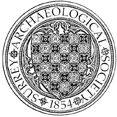Chertsey Revitalisation Scheme: Phase 5
Evaluation of this redevelopment site was carried out by D Hopkinson of AOC, for Countryside Commercial. A series of ditches of mid 10th to mid 12th century date were revealed and a quantity of 13th to 15th century material was recovered, indicating that occupation of these dates lies in the vicinity.


